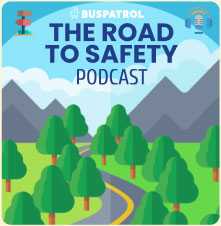A Stop-Arm Camera Study in Quebec, Canada found that drivers illegally pass school buses more than 30,000 times per day.
What is a Stop-Arm Camera Study?
A Stop-Arm Camera Study observes and analyzes data collected from cameras installed on school buses. Firstly, the school bus stop-arm lights flash, and the stop sign (stop-arm) is deployed. The event triggers a video recording. Then, police watch the video to determine if a driver has broken the law by passing the school bus.
What Were the Results of the Stop-Arm Camera Study?
In Quebec, the government authorized the installation of stop-arm cameras on 13 school buses in eight cities. The school bus camera study began in mid-March 2018 and ran for 45 days. The study revealed that drivers pass a deployed stop arm up to 3.8 times per day.
Roberto Rego, the Vice President of BusPatrol, described it as a “game of Russian roulette.” Drivers commit violations daily that put the lives of children in danger.

Roberto Rego, Vice President, BusPatrol
Watch this video produced by CBC. The study was the first of its kind in Quebec and highlights the need for better stop-arm enforcement in Canada.


